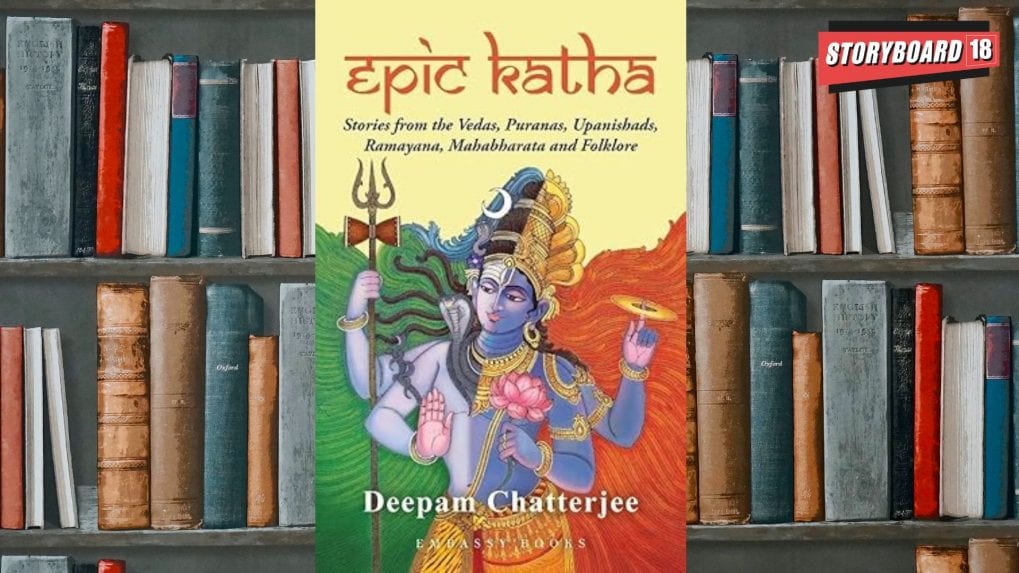Advertising
From Pink Slips to Silent Sidelining: Inside adland’s layoff and anxiety crisis

Lakshman is ‘laksh’ (goal) plus ‘mann’ (mind). Lakshman is blessed with a focussed mind.
A spinal injury compelled author Deepam Chatterjee to leave the army. As a part of his reinvention, he trained under spiritual masters such as Sri Sri and The Dalai Lama before identifying himself as a corporate ‘Happiness Coach.’ We caught him up with a few questions about his book Epic Katha: Stories from the Vedas, Puranas, Upanishads, Ramayana, Mahabharata and folklore and how the book came about.
On what basis did you identify these stories?
There were several factors. On the one hand, I was looking for stories that featured popular characters, but were not well known stories by themselves. On the other hand were stories featuring those characters relatively unknown, except in scholarly circles. It was my publisher's idea to give the sources adequate importance- so that’s how we created sections. At the end of the process, we ended up with 52 stories and one prologue poem in the book.
That would’ve been tough, given that the stories from our mythology are endless
Absolutely. As the designer who was conceptualizing the cover got to work, they came up with Harihara on the cover. So,I wanted to include that story. Then they came up with a back cover featuring the ‘Navagunjara’ on it and I wanted to do that story too. So yes, the book evolved.
In the story- the five awakenings of Bhrigu- when he reaches the final realization, he does not rush to tell his father about it. How do you use this story in your coaching programs?
Awakening cannot be taught. But once enlightened, people don't feel the need to declare anything. They don't need to talk about themselves. You have reached a place where you're fine with who you are where you are and whatever you have done. When you attain the supreme, you remain at peace in whatever state you are; and in the joyful stillness, a beautiful, exquisite and most unique experience arises.
I could identify a theme of balance in almost every story. Is this something intentional?
Take the story of Nataraja and Apasmara. Shiva’s dance is an expression- the destruction of the old giving place to the new! Bondage comes out of ignorance, while freedom comes out of being fully expressed. Shiva is free, eternal, joyous- the principle of complete freedom and complete liberation. It is the opposite of darkness or control. Because those under ‘control’ don't have the freedom to express themselves. But Shiva is always in this magical ‘tandav’ dance of freedom. Hence, when ignorance appears, it is always brought under the feet of the divine principle of Nataraj. Yes, it is quite deep to find the balance in every story.
If the reader had to take away something from the book- what has your design been?
In this cosmos, there's only 4% of bright matter. 96% of this cosmos is dark matter. Shiva’s dance of light over dark, is a reminder that even a small candle in a dark room can remove the darkness , wherever you take it. My focus in the book has been on simple, easy multi-layered stories, that have a feeling of adventure. I have not written the stories the way they are in the Upanishads or the Vedas. They have been reconstructed and also stripped of all devotional content.
Take the 'Hari' and 'Hara' balance in the story ‘Rama meets Shiva’. If you read it deeply, the story is seen through the eyes of Lakshman. He sees that when Shiva meets Ram, both speak to each other joyfully, respect each other, pray to each other and they even give a little bit of wisdom to each other. Their interaction is wholesome. Lakshman can be defined as ‘laksh’ (goal) plus ‘mann’ (mind)- so he has a focussed mind that helps him see this interaction clearly. The focus within us, makes us fully aware and that's when the mind experiences freedom. So yes, every story is about balance. A dilemma that needs to be opened and cleaned and cleared up.
Summing up, here’s a book written to explain that the point of supreme joy is when you have become peaceful with your own work. You don't have to go about seeking validation when you're joyous and free.
Reeta Ramamurthy Gupta is a columnist and bestselling biographer. She is credited with the internationally acclaimed Red Dot Experiment, a decadal six-nation study on how ‘culture impacts communication.’ Asia's first reading coach, you can find her on Instagram @OfficialReetaGupta.
Read More: Bookstrapping: Wellness by Nathan Hill
From purpose-driven work and narrative-rich brand films to AI-enabled ideas and creator-led collaborations, the awards reflect the full spectrum of modern creativity.
Read MoreLooking ahead to the close of 2025 and into 2026, Sorrell sees technology platforms as the clear winners. He described them as “nation states in their own right”, with market capitalisations that exceed the GDPs of many countries.